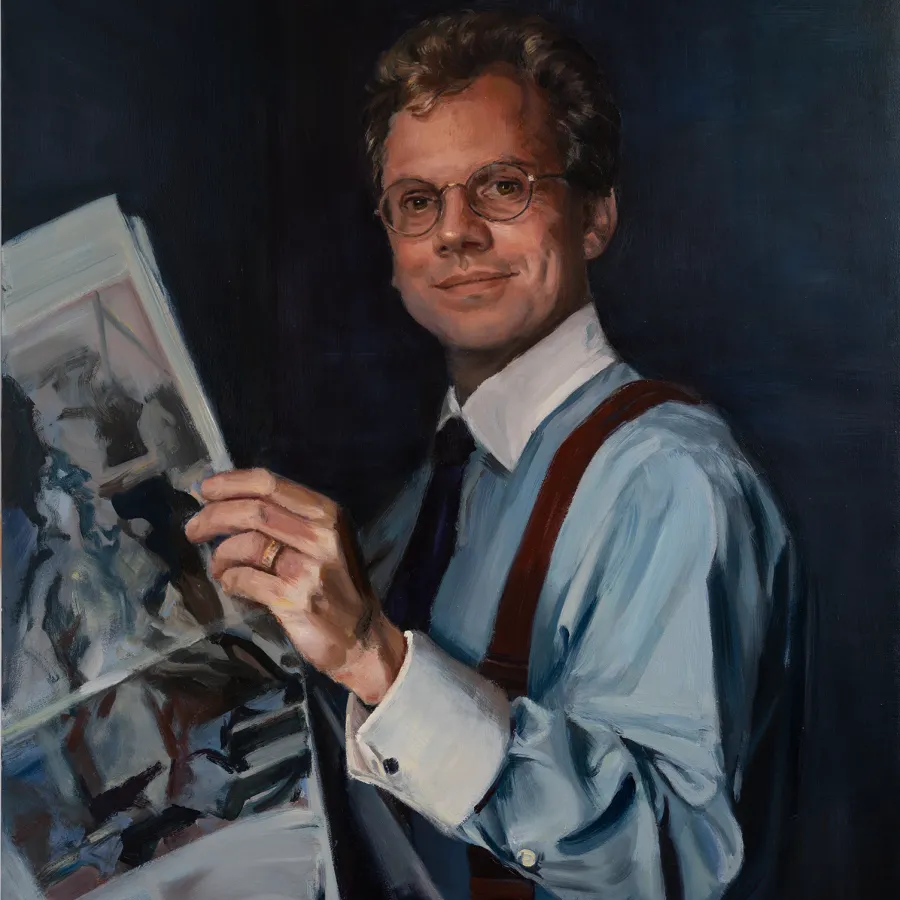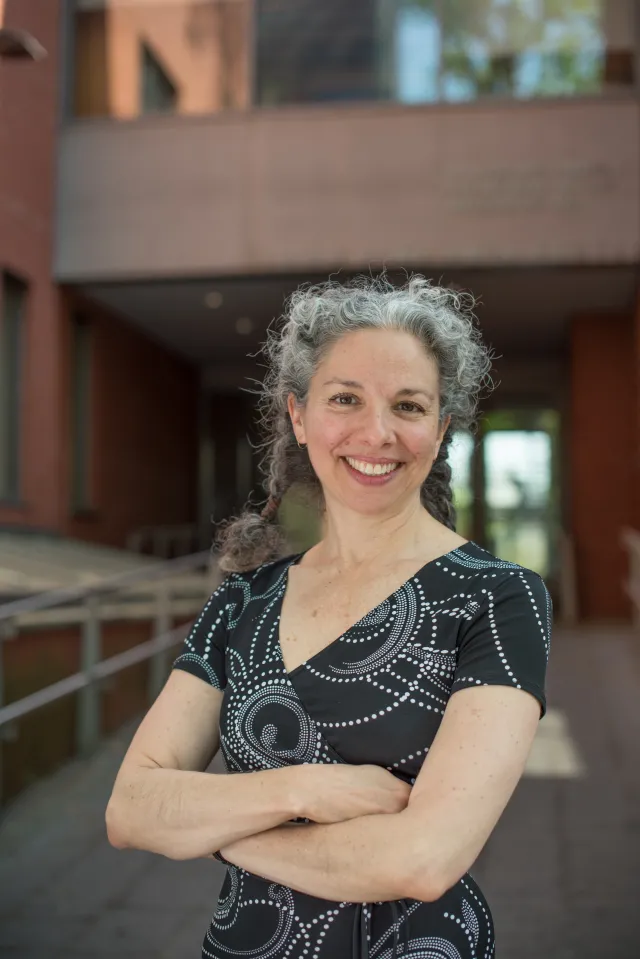All the News That’s Fit To ... Paint
Faculty
Photograph by Andrew Held
Published July 18, 2024
Artist and longtime Smith faculty member Katy Schneider is no stranger to the art of portraiture. Her painting of former Smith President Carol Christ hangs in the Klingenstein Browsing Room in Neilson Library. One of her self-portraits is currently on view at the Smith College Museum of Art.
Portraits of all sorts are a favorite genre. “Growing up in a small New York City apartment with six siblings, I was surrounded by faces,” says Schneider, a lecturer in art at Smith. “That was my landscape.”
Photograph by Jim Gipe
A recent commission, however, posed an unusual artistic challenge. Last spring, Schneider was selected to paint a portrait of Arthur Ochs Sulzberger Jr.—a former publisher of The New York Times and a member of the family that is central to the newspaper’s 173-year history.
The work would be done without Sulzberger sitting for the artist. “I had one photo and a paragraph about him to work from,” Schneider says. “I had to call upon my every skill.”
Raoul Anchondo, a staff editor at the Times who manages the paper’s art collection, had seen Schneider’s still-life paintings at a gallery exhibit in Hudson, New York, and suggested that she put herself forward for the Sulzberger commission.
“Katy stood out as a favorite of everyone,” Anchondo says. “She thinks about art and portraiture in a deep way. We felt she would provide some consistency with the style of our other portraits while infusing this one with new vibrancy and energy.”
Schneider’s painting—the result of more than 200 hours of work—was unveiled April 4 on the 15th floor of the Times building in Manhattan, where it will be displayed alongside portraits of the paper’s other publishers in an area near a new museum exhibit.
Sulzberger’s son, A. G. Sulzberger—the current publisher of the Times—says the portrait captures his father’s “willingness to push change, take risks, and make tough decisions.”
The unveiling event was fun, Schneider says: “Everyone was warm and appreciative.” She was happy to hear from friends and relatives who had known Arthur in his early 40s—the age he appears in the portrait.
Schneider says her late parents would have been thrilled about the commission. “It would have meant the world to them,” she says. “The New York Times held an incredibly central place in my family of nine. We had a chore chart, but the one and only paid job was to take 35 cents from my dad to go out and purchase the Sunday Times before it was sold out.”
“I had one photo and a paragraph about him to work from. I had to call upon my every skill.”
So, how did Schneider prepare to paint the portrait? Here are the words she was given, along with the photo:
Arthur Ochs Sulzberger Jr., now 71 years old, was the publisher of The New York Times from 1992 to 2018. The portrait we seek would show him as a younger man. Among his defining social characteristics are informality, humor, geniality, and youthfulness. As an executive, he was innovative, daring, impatient, and unafraid of taking risks. (In his spare time, he was a rock climber and motorcyclist.)
Fortunately, the photo selected of Sulzberger “had an appealing expression and posture,” the artist says. “In it, he holds a mock-up version of the paper’s first color weekend section. Given that the Times—formerly nicknamed the Gray Lady—would begin to feature color photography on the front page for the first time under his tenure, this seemed like a good choice.”
Without being able to set up lighting for the portrait, “I had to find subtler ways to create interesting relationships” in the artwork, Schneider says. “The expression on his face would need to be very specific. I’d need to invent ways to exaggerate volume.”
In her Smith classes, Schneider frequently talks to her students about the limitations of painting from photos. And yet, with her latest portrait, there was a kind of “aha!” moment when she knew she had succeeded in capturing the subtleties and energy of her subject despite the fact that he wasn’t physically present in the studio.
“Without a model sitting for me, this painting required a tremendous amount of trial and error. I just had to look and paint and look and paint,” Schneider says. “One day, some minor sloshing of paint brought Arthur to life. It was like Pinocchio suddenly turning from wood to a boy. I don’t know what I did, but it worked.”

